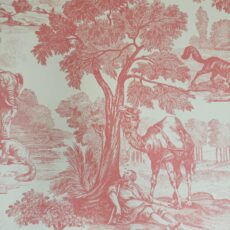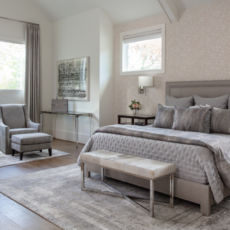Houston Interior Designer Danna Smith Shares the Role Mood Boards Play in Interior Design
By: Danna Smith
Whether building a new construction home or renovating, selecting finishes for a new space can feel overwhelming. Many decisions lie on the table, from paint and flooring to furnishings and accessories. How are you supposed to picture these elements together in your finished room? Learning how to use a mood board to visualize your space can help you through the process. I’m going to share how our Houston interior design firm uses mood boards to help our clients picture their spaces before a coat of paint ever hits the walls.
Finding Interior Design Inspiration
First, where should you look for inspiration? Interior design inspiration can come from anywhere, including books, movies, or a special destination from your travels. Ask yourself how you want to feel in your finished space. What is the atmosphere you’re looking to achieve? Our clients gather inspiration from many different places, and it is our responsibility to translate it into a plan that allows them to visualize the finished product.

Travel Inspiration
Communicating the Vision
I teach a Fundamentals of Interior Design class at Houston Community College. In my class, I like to call this translation process “communicating the vision.” As interior designers, we’re challenged to take what we envision for the project and put it on paper to show our clients. But how do we demonstrate the fabrics, finishes, and textures will live together as harmoniously in the physical space as well as they do in our minds?
Interior designers practice visualization daily, so it’s easy for us to imagine what something will look like before it’s done. However, our clients may not be visual people like us. They may have trouble envisioning fabrics pairing with one another or how a paint color will look on a wall. When we talk about the “vision” we see for a client’s space, we need to give them something they can see to help picture the finished result.
There are several ways to communicate the vision. A quick sketch can help get the idea across, but one of the best ways is through a mood board.
How to Use a Mood Board
A mood board is an arrangement of images and material samples intended to evoke a feeling or show how a design concept will come together. Think of them as a collage of ideas that help set the project’s direction. Mood boards are used in design quite frequently and have evolved through the years with technology, just like interior design itself. They are a great way to ensure the client is on the same page as the designer while providing an opportunity for feedback and questions.
When I began my interior design career, mood boards were large and cumbersome. They were made from mat boards with fabric, tile, and wallpaper samples mounted on them to show the client how all the elements would blend in the space. These boards quickly became large and heavy for bigger projects!
Now, we create digital mood boards. Our clients have very busy lives. The easier it is for them to see the space and materials, the easier it is for them to approve the designs. There are many different programs you can use to create a mood board. At Pamela Hope Designs, we prefer to make our presentations using PowerPoint. Most of our clients are familiar with this program and can review it from any of their devices.
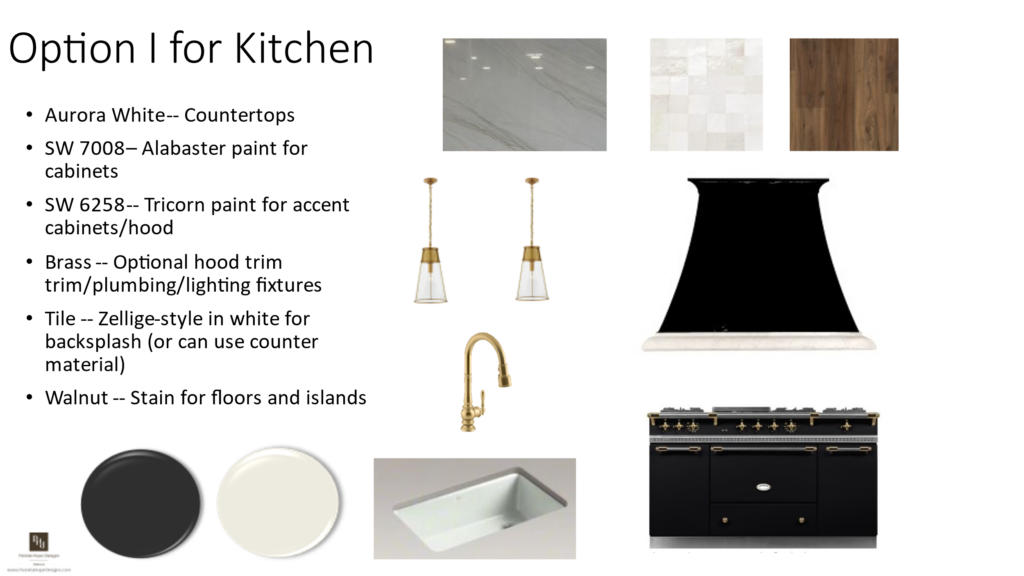
Creating a Mood Board
There are a few points to remember when creating a mood board.
- Ensure the material samples all work to convey a single design concept.
- Create an ambiance for the space with a distinct color palette.
- Include a brief explanation of the items suggested and how you plan to use them.
- Tell a story of your vision through beautiful photos of fabrics, finishes, furnishings, and accessories.
- Sometimes, it is ok to include abstract pictures that capture a feeling or examples of other similarly finished rooms.
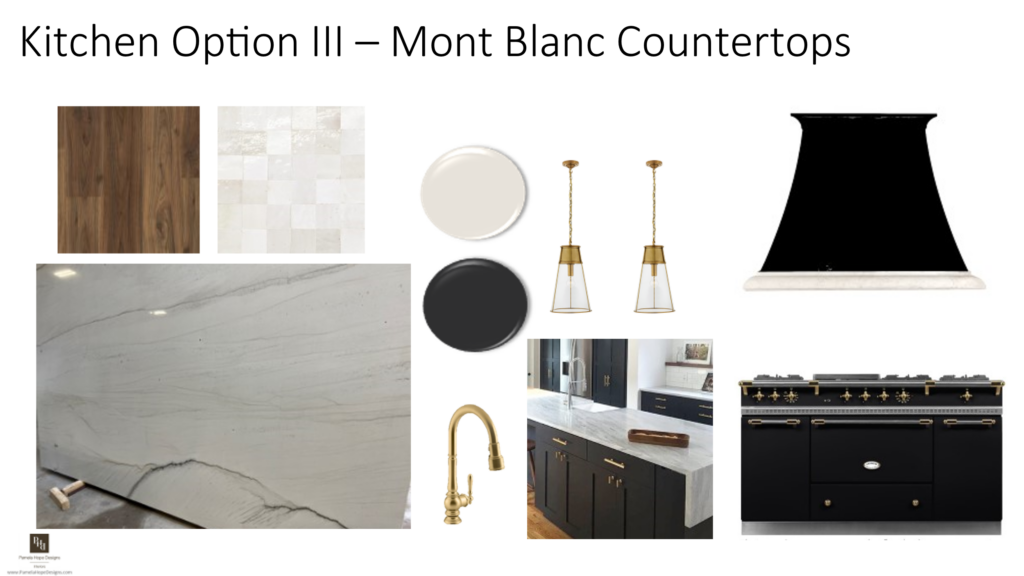
Mood Board Examples
We suggested a traditional design scheme for our Tanglewood project mood board. The client is a retired couple ready to give their 30-year-old home a completely updated look. We’re planning a renovation from top to bottom, including the floors, walls, ceilings, and everything in between!
Our traditional mood board features neutral colors and updated furnishings, including walnut-finished wood floors and a wool rug in soft blues, taupes, and creams to bring pattern and color into the space. We included the client’s treasured art piece over the sofa and a little bit of greenery around the room for a fresh look. The look is stylish, updated, and timeless.
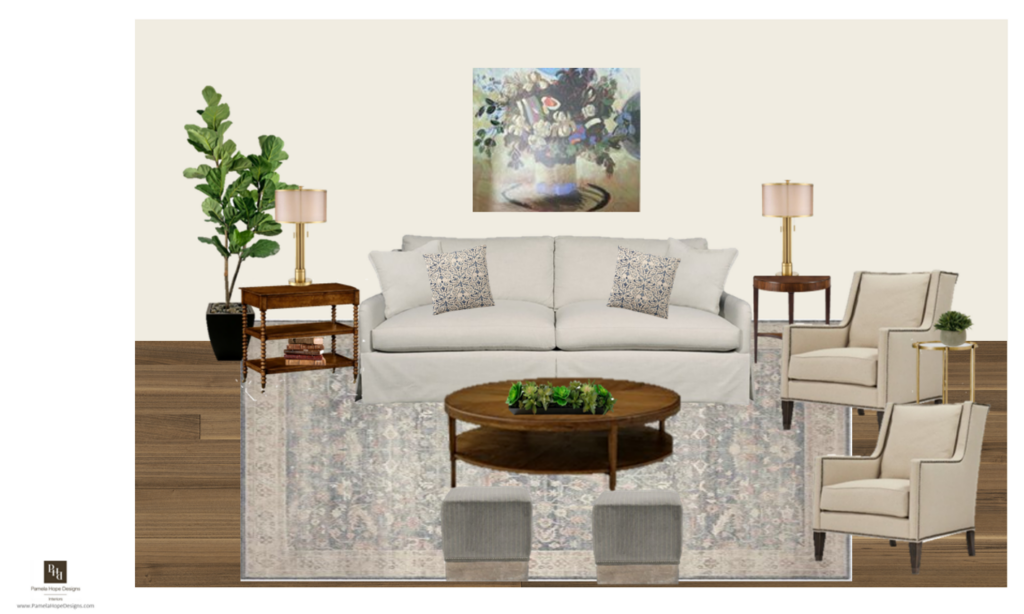
Our River Oaks project mood board features a completely different style. The client loves color and wanted to use bold hues as much as possible, so we did! We have color throughout her townhome, but my favorite room is the 4th-floor game room. We had the luxury of starting with a blank canvas to let our imagination flourish. We suggested color blocking on the walls and playful furniture and accessories throughout the space. You can see the process from the mood board to the finished project here. It’s fantastic, if I do say so myself!
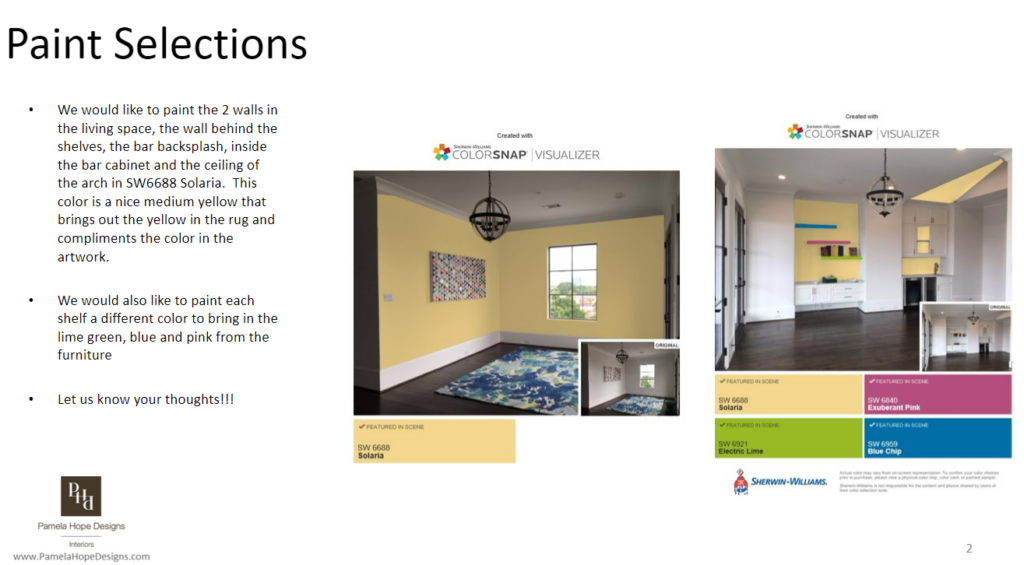
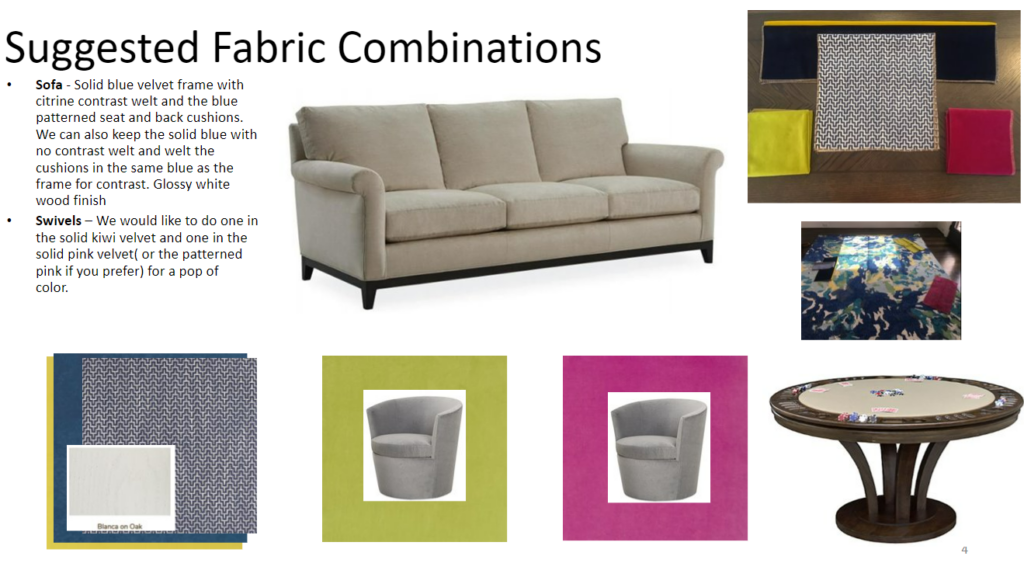
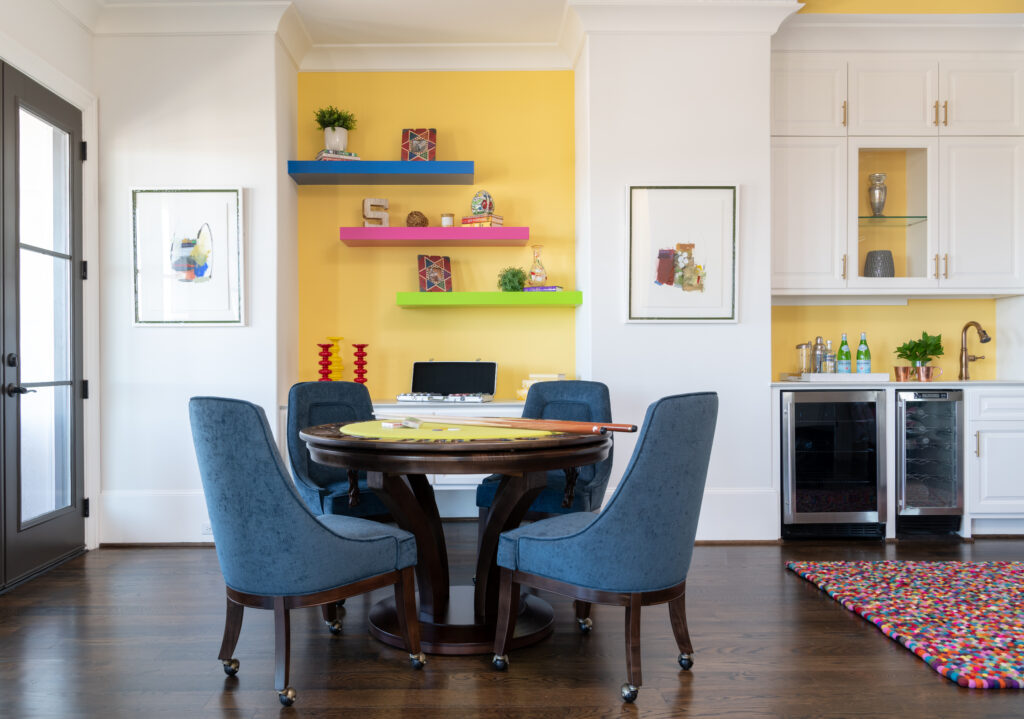
In the Mood to Create a Mood Board
So, remember, the next time you decide to create a new space for your home, start with a mood board. The mood board will bring your ideas together, help give you direction, and keep you on track for your vision of your space. If creating a mood board for your design is difficult, call us. We can help bring your ideas to life!
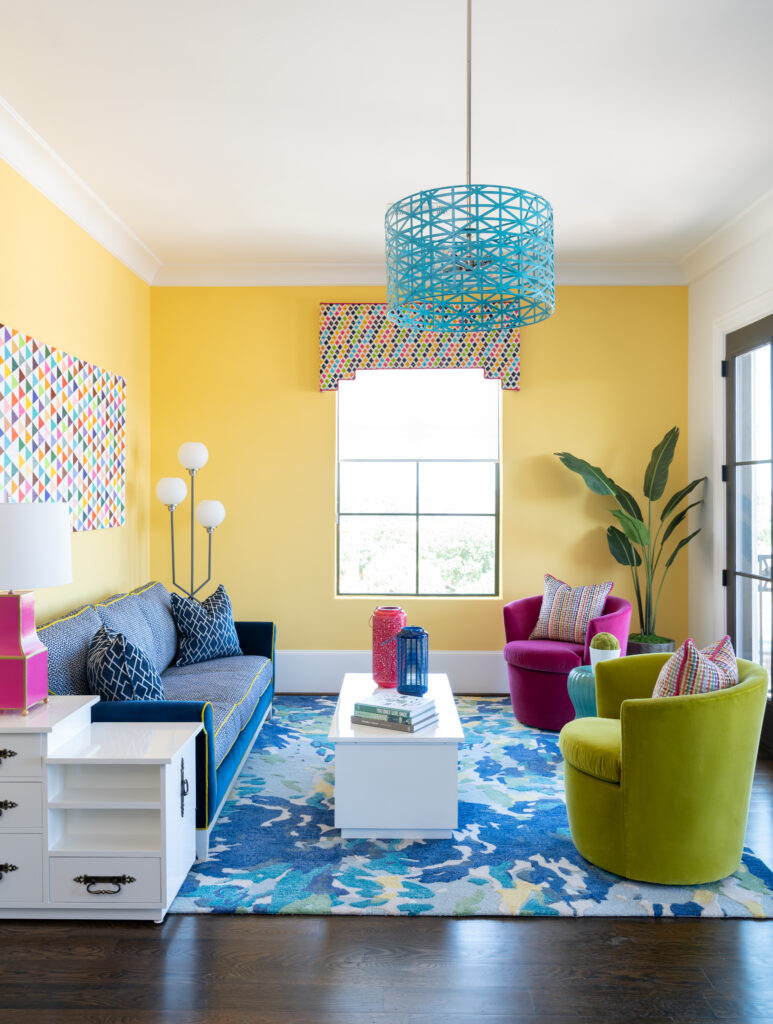
Until next time, let your creative juices flow!
— Danna

